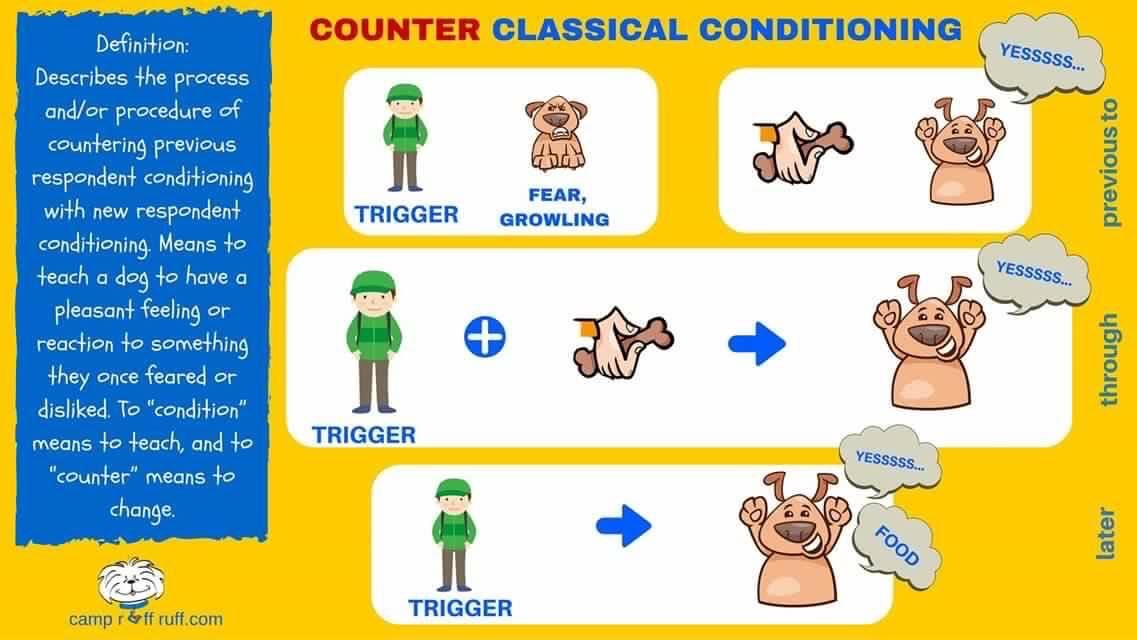
Desensitizing and Counter-conditioning
At one point in time, I had a neurotic sheltie. Some people might say that most shelties are neurotic, but you’ll soon see why this case was a misunderstanding. Candy was afraid of everything; vacuums, carpeting, other dogs, and the entire contents of the outside world. Fortunately, through using the slow and steady technique of counter-conditioning and desensitization, Candy was able to lose nearly all of her neurosis and was adopted into an understanding family. This approach, while sometimes discarded by trainers for being too slow, can gently lead a misbehaving dog to a calmer demeanor, all while working with their personality instead of against.
By slowly introducing objects and situations that once sent Candy into terror, and pairing them with plenty of treats and toys, Candy slowly started viewing once-hated items positively. Over two months, she was able to stay calmly nearby a working vacuum, cross the road without bolting, and no longer snapped at men. Counter-conditioning and desensitization are simple to implement, but can have an incredible effect on behavior and training.
Desensitization and counter-conditioning: What Are They?
Both of these techniques are used every day during interactions with our pets, usually without us realizing. When we ask visitors to give our dog a treat when coming in, we are counter-conditioning our dog to like visitors. By leaving the harness on a dog that hates collars, we are desensitizing them to the feeling of pressure around their neck. Essentially, it is a way to work with a dog to change how they feel about a stimulus by appealing to normal behavioral patterns.
As Susan Freidman once said, “Desensitization only gets you to neutral.” (E., 2016). When desensitizing, we take an object that causes a strong emotional reaction from a dog and we slowly introduce it until the emotional reaction no longer happens. With counter-conditioning, we pair a good stimulus with a stimulus the dog doesn’t like in order to create a positive emotional reaction to something that once scared the dog.
The major difference between the two is, when desensitizing, the goal is not necessarily to create positive association with a stimulus, but to stop a reaction to the stimulus from happening. With counterconditioning, the goal is to create a positive emotional association. Both can create a change in reactions in a short period of time, but have the best results when introduced slowly.
Flooding Verses Desensitization:
Many trainers will claim to be able to cure severe reactions, such as Candy’s desire to attack vacuum cleaners, in as little as one session. While these results are possible, they come at a cost. A technique known as flooding, or forcing a dog to experience a negative stimulus until no reaction is shown, can be effective. If I had used this technique with Candy, this would be the equivalent to tying her leash to the vacuum and turning it on until she had stopped trying to attack it or run away. Once she had stopped showing a reaction to the item she once panicked over, it would be considered an extinct reaction, and the flooding successful. This can take as little as thirty minutes or a few hours, depending on how strong the reaction is.
In 1975, a psychologist wrote that they were finding the flooding technique to actually be more effective in eliminating a fear response than the gentler desensitization method (Astrup, 1975). As a result, flooding was the rage for all training models. What resulted, forty-odd years later, was a training system that prioritized speed over creating a trusting bond between trainer and dog.
While this method might seem harmless, as it is recommended by some trainers, it creates the expectation from the dog that the owner is the cause of unpleasant experiences, and can simply shift the negative reaction to them. When looking to extinguish undesirable behaviors, the slower methods of desensitization or counterconditioning will create a rapport of trust and understanding, instead of dread.
Now, trained dog behaviorists recommend slowly reconditioning a pet to adjust to undesirable stimuli, through counter-conditioning and desensitization, rather than damage a healthy relationship with forceful techniques.
How to Help Your Dog:
In a study published in Applied Animal Behavior Science, scientists looked at whether counter-conditioning or desensitization was more effective in retraining reactions. A group of eight dogs who were trained with either counter-conditioning, desensitization, or both to eliminate separation anxiety. Six were found to be anxiety-free after two months. Dogs who were only trained with desensitization, however, were found to be the most consistently trained out of anxiety, even when the technique was not applied consistently. While this is a very small case study, the secret to breaking bad habits may be in focusing on desensitization.
For desensitization, try introducing whatever it is your dog doesn’t like in small increments, until they do not notice it anymore. If they go crazy when they are about to get a walk, try saying the word “Walk” frequently, until they stop perking their ears up. Then, get out their leash and put in it on the floor. Keep doing this until they stop getting excited when the leash is brought out. Continue all the steps of a walk without actually going for a walk, and wait until the dog isn’t showing any reaction to advance to the next step. When you can get the collar on, leash attached, shoes on, and your hand is on the door handle with no reaction, you can consider the desensitization effective.
While desensitization is extremely effect, it cannot be used in all circumstances. It is impossible, for example, to get the mailman to walk up the sidewalk over and over again without approaching your door. This is when counter-conditioning comes in. Whenever the mailman comes around, give your dog a treat. Do this consistently for a week and your dog will stop barking and trying to attack through the door, but will start looking for a treat. In this way, the mailman is paired with good food instead of territory invasion.
Applying these techniques are simple, but effective ways to retrain an undesirable behavior out of your routine. More importantly, it works with a dogs’ natural instincts to train, while maintaining respect in your relationship.
By Lauren Pescarus
Astrup, C. (1975). Psychological Mechanisms of Flooding (Implosion) Therapy. Psychotherapy and Psychosomatics, 25(1-6), 63-68. doi:10.1159/000286832
Butler, R., Sargisson, R. J., & Elliffe, D. (2011). The efficacy of systematic desensitization for treating the separation-related problem behaviour of domestic dogs. Applied Animal Behaviour Science, 129(2-4), 136-145. doi:10.1016/j.applanim.2010.11.001
- (2016, October 02). Successful Desensitization and Counterconditioning. Retrieved March 10, 2018, from https://eileenanddogs.com/2013/11/10/successful-desensitization-and-counterconditioning/



